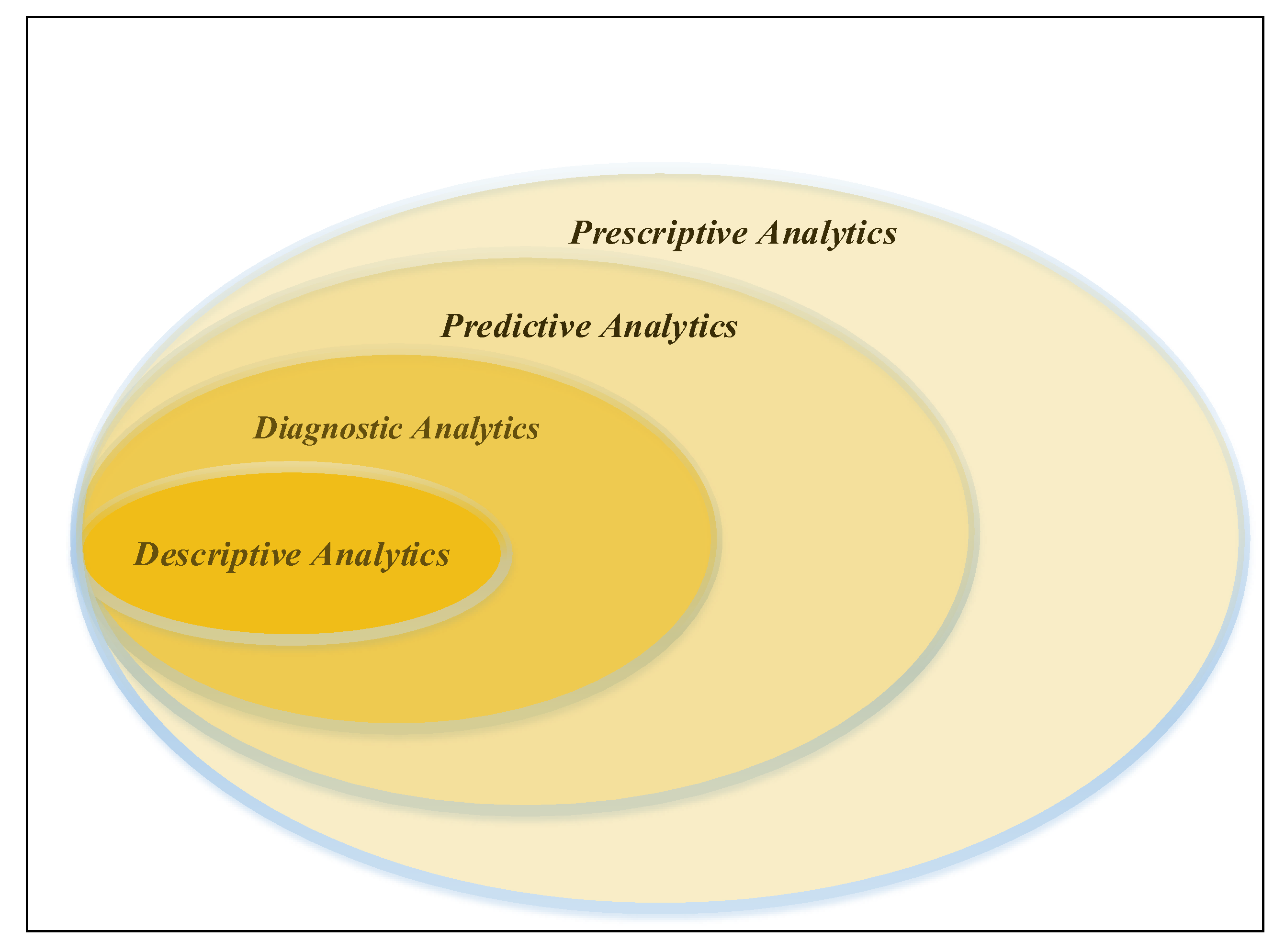After reading this paper, you should clearly understand the relationship between the analytic methodologies and techniques associated with big data and how to integrate it with a new correlation taxonomy. This paper adds more distinction to the 5Vs of big data you read about previously. You will recognize the characteristics and significance of the descriptive, diagnostic, predictive, and prescriptive integration methods.
3. A Narrative Prospective for Big Data Analytics Methods
As organisations start to adopt analytics as the new science of winning, they need to focus on understanding the method of analytics that support its insights and enables better decisions. One way of appreciating these methods is through classification. Therefore, BDA was classified according to different criteria such as data understanding. In 2009, Thomas Davenport based his idea on looking at all the data first to understand it and then answer the questions: what has happened? Why it has happened? What will happen? And how to make the best of it? These four questions were identified as descriptive, diagnostic, predictive, and prescriptive methods, which will be explained clearly with examples below:
- Descriptive analytics looks at data and analyses past events for insight as to how to approach the future; it asks, "what has happened?" An example is to categorise customers by their product preferences and life stage.
- Diagnostic analytics at this stage, historical data can be measured against other data to answer the question of "why it happened?" providing a possible way to find out dependencies and to identify patterns. For example, a retailer filters the sales down to subcategories. Companies employ diagnostic analytics, as it gives them in-depth insights into a particular problem. At the same time, a company should have detailed information at their disposal; otherwise, data collection may turn out to be individual for every issue and therefore time-consuming.
- Predictive analytics turns data into valuable and actionable information; in other words predictive analytics determines the probable future outcome of an event or a likelihood of a situation occurring; i.e., "what will happen?" For example, for an organisation that offers multiple products, predictive analytics can help analyse customers' spending, usage and other behavior, leading to efficient cross sales, or selling additional products to current customers. This directly leads to higher profitability per customer and stronger customer relationships.
- Prescriptive analytics automatically synthesises big data, mathematical sciences, business rules, and machine learning to make predictions and then suggests decision options to take advantage of the predictions, asking "how to make the best of it?" An example is to determination of the best pricing and advertising strategy to maximise revenue.
In 2019, Davenport added another question "What if we take action? Which was represented by an automated analytics method that follows the prescriptive method. A similar classification was presented in Strengthening Data Science Methods for Department of Defence Personnel and Readiness Missions where three analytical stages were presented: descriptive and exploratory, predictive and prescriptive where data preparation methods were considered in an advanced stage. Other BDA classifications are valid too, such as Security Data Collection and Data Analytics in the Internet: A Survey classification for BDA methods according to security data that includes statistical methods, machine learning, and knowledge-based methods whereas Big Data Analytic Approaches Classification presented generic architecture for big data analytical approaches, allowing classification according to the data storage layer, the distributed parallel model, and the type of database used.
The Davenport's BDA classification is the preferred and most-popular structure because of the integration, ordering, and compatibility between the methods; hence, it will be adopted in this paper. Figure 3 illustrates how big data analytics methods complement each other. The analytics for big data should start with the descriptive method that helps to gain insight from historical data then grow to the diagnostic analytics for clustering, predictive analytics helps to designate the future outcomes and prescriptive methods involved in making decisions. The following sections will discuss and present the BDA correlations based on the method's integration factor, presented in this section.

Figure 3. Big data analytics methods integration.